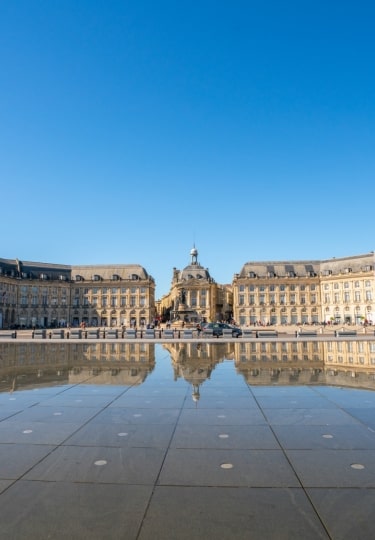Exploring the top historical landmarks in France is a journey through time. Known as Gaul to the Romans, the country has many centuries of glories to showcase.
Like the magnificent Pont du Gard near Nîmes, one of the great legacies of the Romans, many France landmarks are recognized by UNESCO as belonging to the world’s heritage. Others, such as Omaha Beach in Normandy, are more recent but still resonate with anyone who knows their story.
In fact, there are so many spectacular places in France – Versailles, for example, or the Lascaux Caves and the châteaux of the Loire Valley – that no single visit could take them all in. The only answer is to come back again and again.
Here, meanwhile, are the 12 of the best historical French landmarks to visit.
Eiffel Tower, Paris
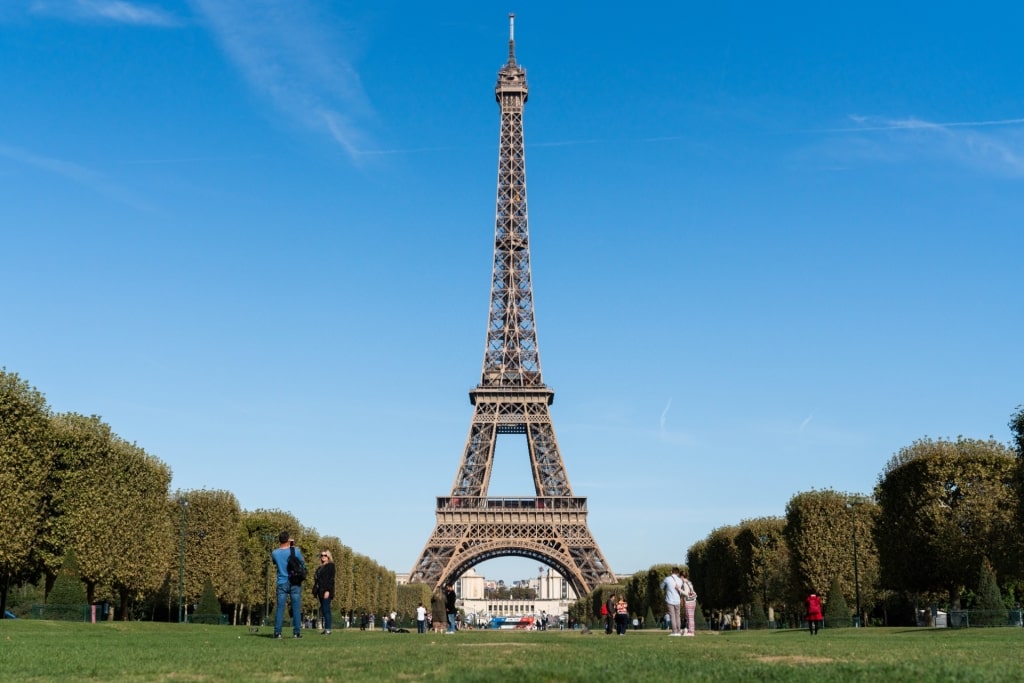
Eiffel Tower, Paris
The Eiffel Tower was famously built as a temporary structure, its massive arches the entrance to the 1889 World’s Fair.
That fair marked the 100th anniversary of the French Revolution, but the 1,050-foot-tall tower has survived its 200th as well.
Now a symbol that Paris is famous for, it’s hard to imagine how unpopular this industrial piece of engineering was at the time. Author Guy de Maupassant supposedly regularly ate lunch here because it was the only place in Paris from where he couldn’t see it.
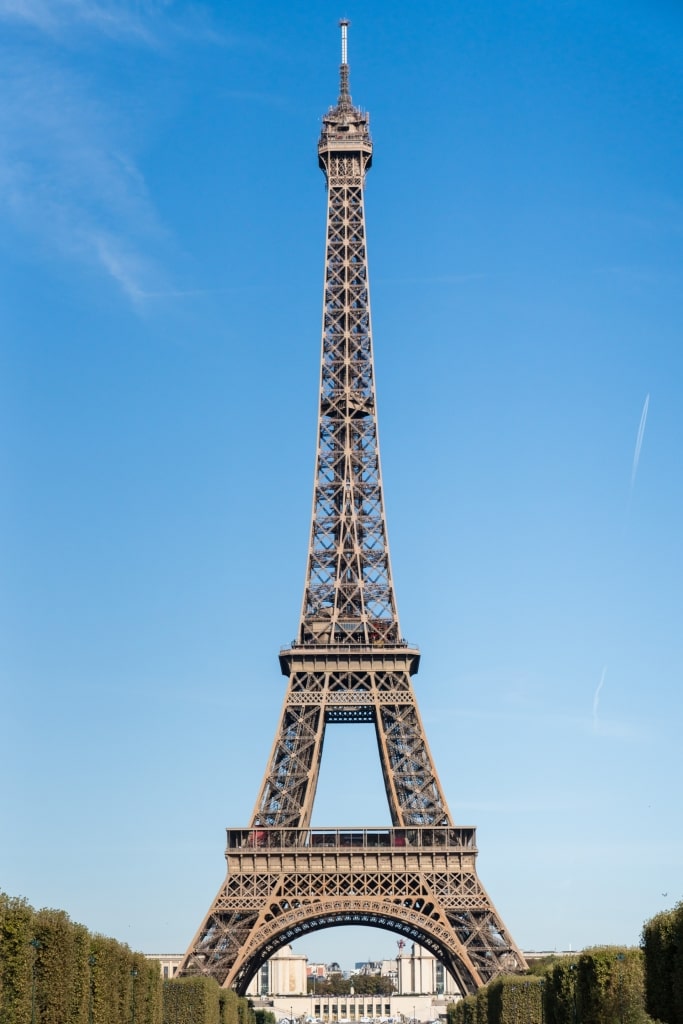
Eiffel Tower, Paris
The first structure to reach 1,000 feet, the Parisian landmark was the world’s tallest for nearly 40 years until briefly overtaken by the Chrysler Building. Its importance as a radio tower ensured its survival after its initial 20-year building license ran out.
Eiffel’s revolutionary bolted iron construction was predated by the Statue of Liberty framework his firm designed in 1886. He was chosen for his expertise on wind forces, a subject that fascinated him for the rest of his life.
Read: Best Things to Do in Paris With Kids
Pont du Gard, near Marseille
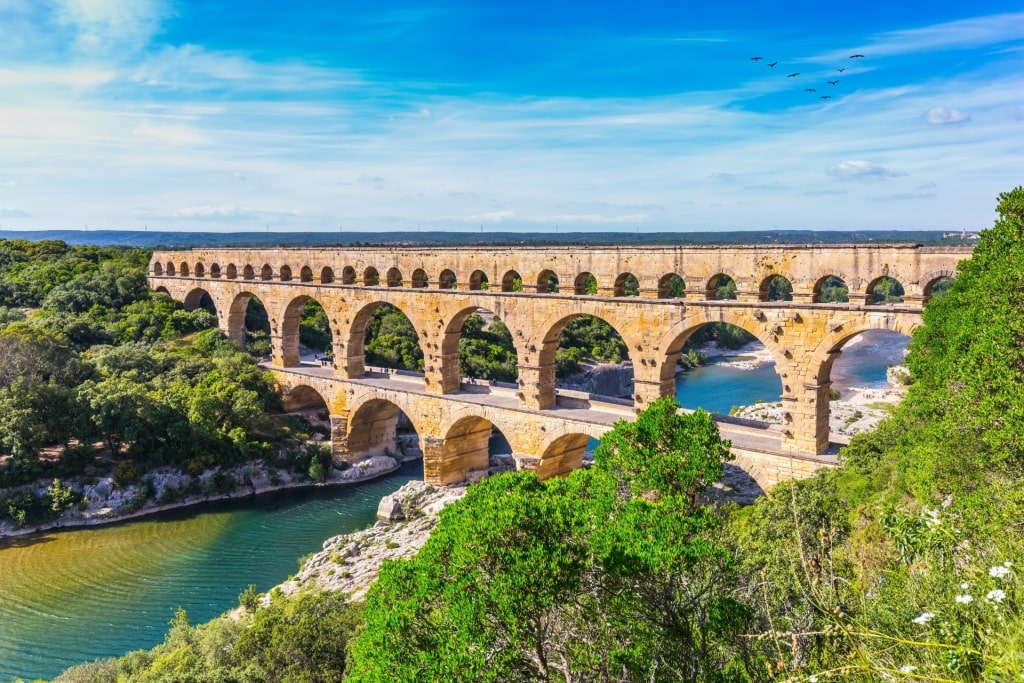
Pont du Gard, near Marseille
Ancient Rome’s tallest aqueduct bridge, and perhaps its most beautiful spans the Gardon river on three tiers of arches. It is a key part of a 30-mile aqueduct that carried water to Nîmes at a remarkable average gradient of only 1 in 18,000.
That engineering precision carries over to the bridge, which was built mostly without mortar. Standing 60 feet high, it is perfectly level, apart from the top section with a gradient fall of just under an inch from one side to the other.
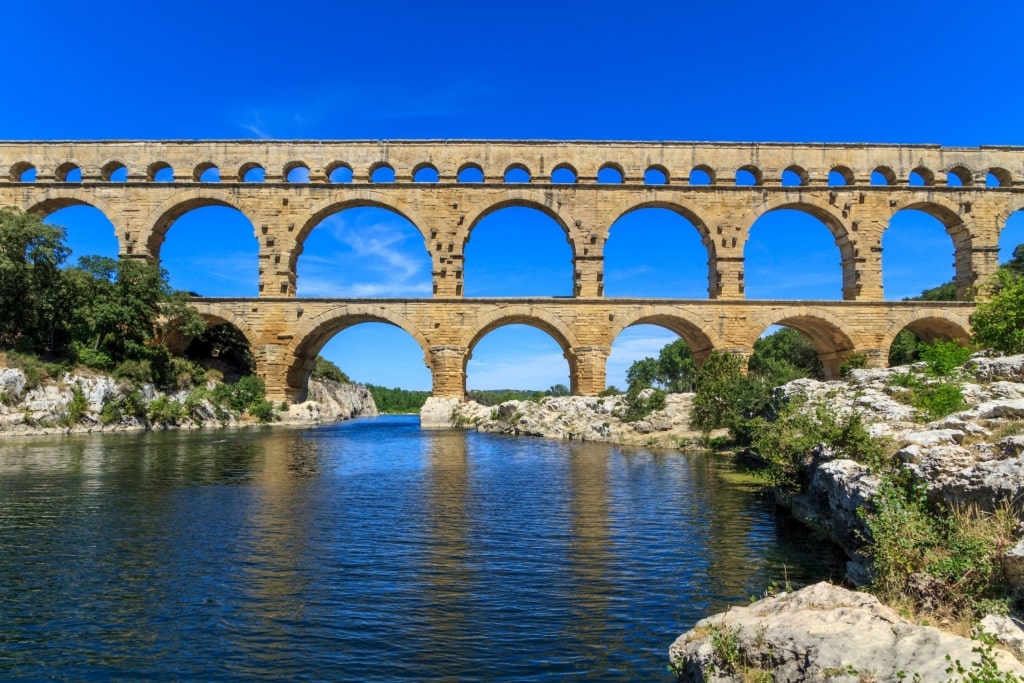
Pont du Gard, near Marseille
The main arches are elliptical, rather than circular, lessening the wind forces in this sometimes stormy region. That means almost every block had to be cut individually to fit, and you can still see the offsite numbering system cut into each one.
During the Middle Ages, Pont du Gard was used as a toll bridge—one of the reasons it has survived through the centuries. It was declared a “Monument Historique” by the French government as early as 1840.
Basilica of the Sacré-Coeur, Paris

Basilica of the Sacré-Coeur, Paris
Sacré-Coeur is one of the most-photographed sights of Paris and a France landmark that many will recognize. Some ten million visitors visit it every year, along with the nearby artist-filled Place du Tertre.
The area’s reputation was built during the Belle Époque era from 1870 to the outbreak of WWI in 1914. Artists such as Modigliani, Renoir, Monet, Degas and Toulouse-Lautrec lived and worked here.

Basilica of the Sacré-Coeur, Paris
The basilica sits atop Montmartre (“Hill of Mars”), a 430-foot-high hill that gives spectacular views over Paris. You can climb the 222 stairs, or take the funicular if you only have one day in Paris.
Sacré-Coeur was built in 1873 to mark the end of the Franco-Prussian War. That war united Germany into one state, and put an end to France’s imperial ambitions.
Its stonework comes from the Château-Landon quarries and cleans itself when rained on. This bleaching effect gives the dome its sparkling white presence.
Place de la Bourse, Bordeaux
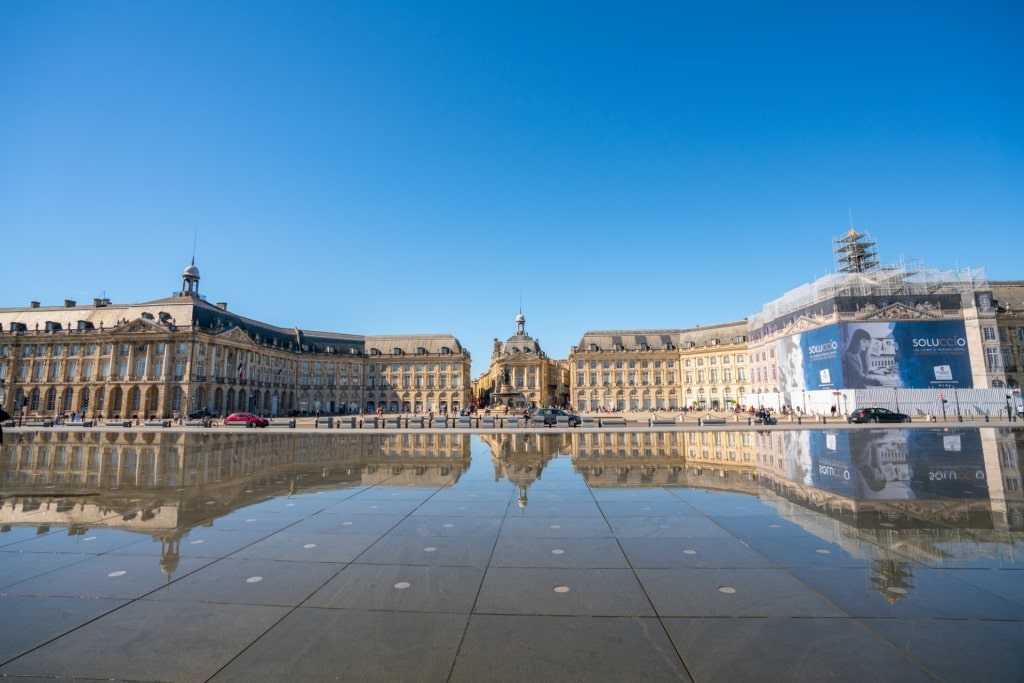
Place de la Bourse, Bordeaux
The world’s largest reflecting pool gives the splendid 18th-century architecture of Place de la Bourse twice the appeal.
Architect Ange-Jacques Gabriel laid out this public square in 1755, anchored on the Bourse (Stock Exchange) and the Musée National des Douanes (National Customs Museum).
The Miroir d’Eau was added by landscape architect Michel Corajou in 2006. It was an instant hit with the public and is now a symbol of the city’s modern resurgence.
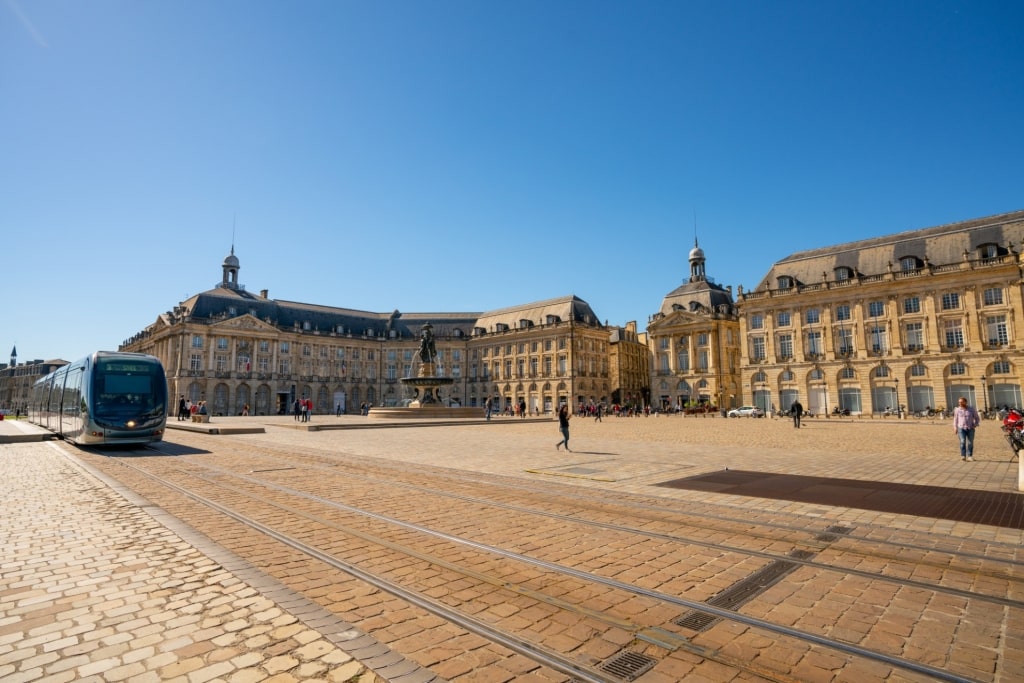
Place de la Bourse, Bordeaux
Place de la Bourse was equally significant in its time. It was built after the city’s walls were demolished, signifying the opening to international trade and the sweeping away of medieval protectionism.
The city’s fortunes have waxed and waned since then, booming during the slave trade and again with aeronautics since the 1960s. Mayor Alain Juppé then led a massive transformation of the old city during the 1990s.
France is known for its wine, and it has been a constant presence in the economy of Bordeaux, which lies at the heart of some of the world’s most famous wine regions.
Read: The Ultimate Bordeaux Wine Region Guide
Omaha Beach / Pointe du Hoc, Normandy
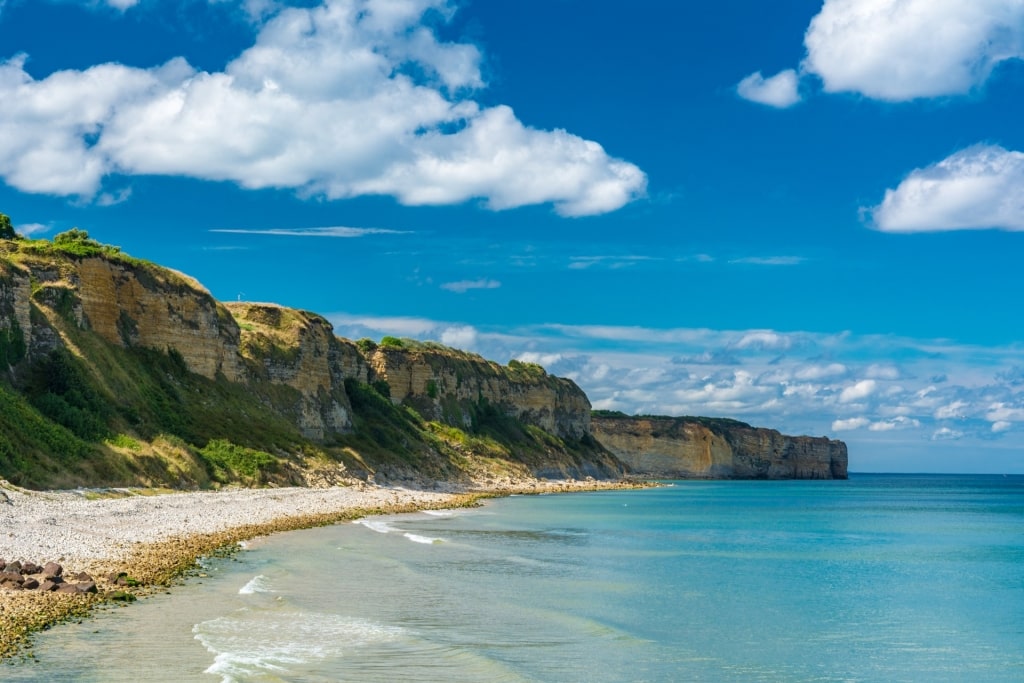
Omaha Beach, Normandy
The bloodiest beach of D-Day saw 3,000 casualties among the 43,250 men who landed on June 6, 1944. These killed and wounded American soldiers paid a high price for this first step toward the liberation of Europe from Nazi tyranny.
Omaha was the code name for a five-mile section of the Normandy coastline. Commonly called “Omaha Beach”, it remains a long, flat expanse of sand whose 300 yards of width must have seemed endless then.
The remnants of German strongpoints still stand to give some idea of the opposition American soldiers—many National Guardsmen—faced crossing it. Colonel George Taylor’s words ring through history: “There are two kinds of people who are staying on this beach: those who are dead and those who are going to die.”

Normandy American Cemetery and Memorial
Above the beach, you will find the Normandy American Cemetery and Memorial. Its beautiful and solemn grounds hold 9,388 graves.
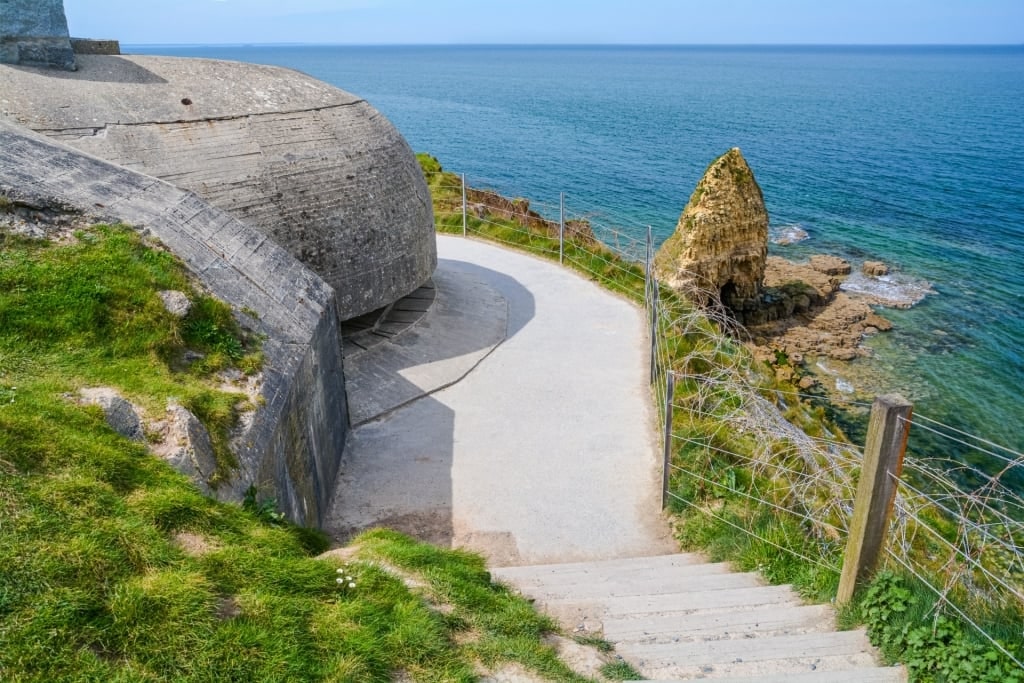
Pointe du Hoc, Normandy
Overlooking Omaha was the artillery strongpoint of Pointe du Hoc. Successfully attacked by U.S. Army Rangers on D-Day, it has its own memorial to their heroism.
Read: Famous Historical Sites in France
Basilica Saint-Michel, Bordeaux
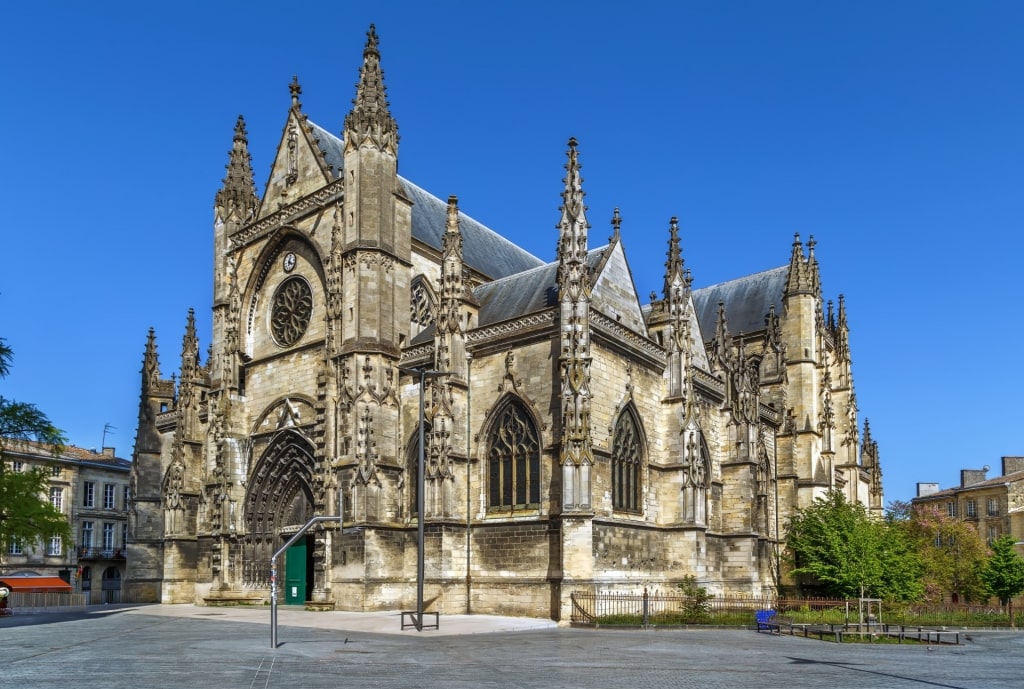
Basilica Saint-Michel, Bordeaux
Taking 200 years to build, this Gothic church is visible from most of Bordeaux. Its tower, the fourth-highest in France, was built separately because of the city’s unstable ground and the weight of its bells.
One of the best things to do in Bordeaux is to climb the 200 steps of the tower—called “La Flèche” (The Arrow) by locals—to take in the city views. One the way you’ll see the carillon of 22 bells.
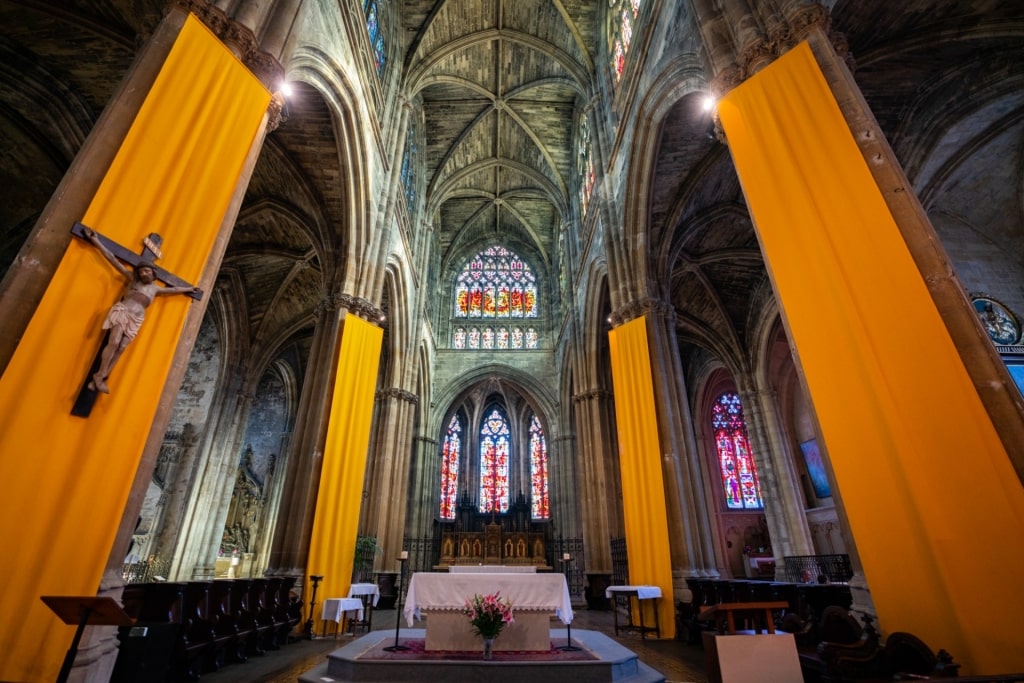
Basilica Saint-Michel, Bordeaux
The church’s stained glass windows were destroyed by a World War II bombing. The remarkable replacements by artists Pierre Gaudin, Max Ingrand and Jean-Henri Couturat combine contemporary style with traditional religious themes.
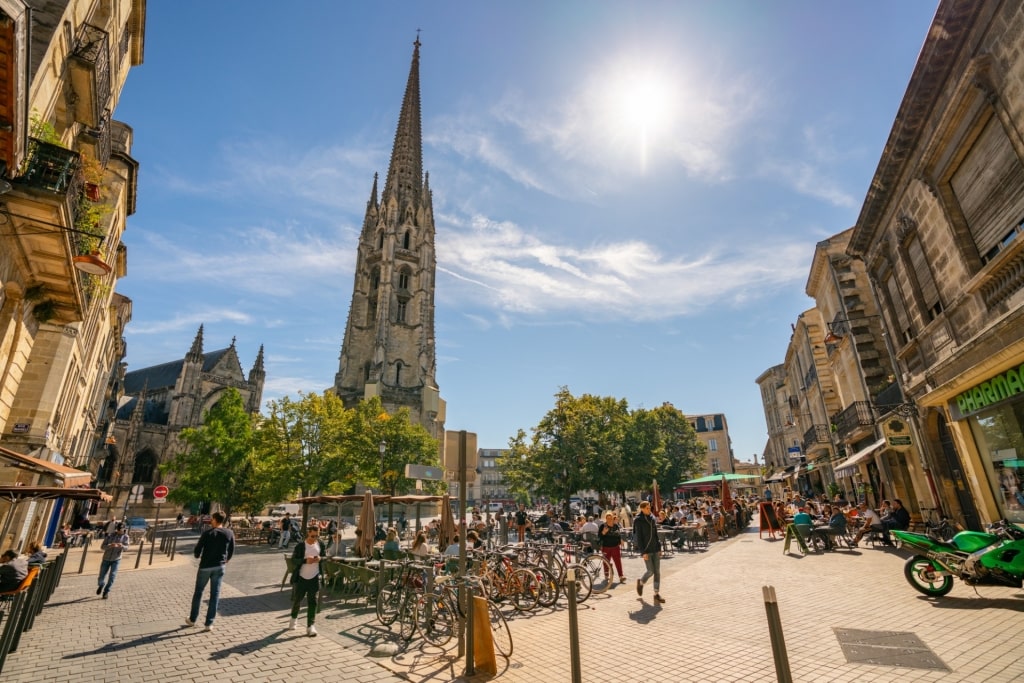
Bordeaux
The area around the church is a lively and interesting one, with a series of weekly markets, and chic cafés. You may also enjoy Passage Saint Michel for its antiques dealers and galleries.
Père Lachaise Cemetery, Paris

Père Lachaise Cemetery, Paris
Flowers left by fans decorate the grave of Jim Morrison of The Doors. An angel guards the grave of exiled Irish writer Oscar Wilde.
These are just two of the many monuments within the most visited cemetery in Paris: Père Lachaise. It was opened after the French Revolution, by order of Napoleon Bonaparte, to ensure every citizen could have a decent burial.

Père Lachaise Cemetery, Paris
More than two centuries later, it now holds the remains of some three million people. That vast number is still slightly less than the number of annual visitors.
Other famous burials include composer Frédéric Chopin, singers Édith Piaf (and four of her lovers) and Maria Callas, writer Marcel Proust, and actor Sarah Bernhardt.

Grave of Heloise and Abelard in Père Lachaise Cemetery, Paris
The romantic atmosphere of the cemetery is enhanced by the grave of star-crossed lovers Heloise and Abelard. They were reburied here in 1817 to help publicize what was then a remote spot.
Mont Saint Michel Abbey, near Le Havre
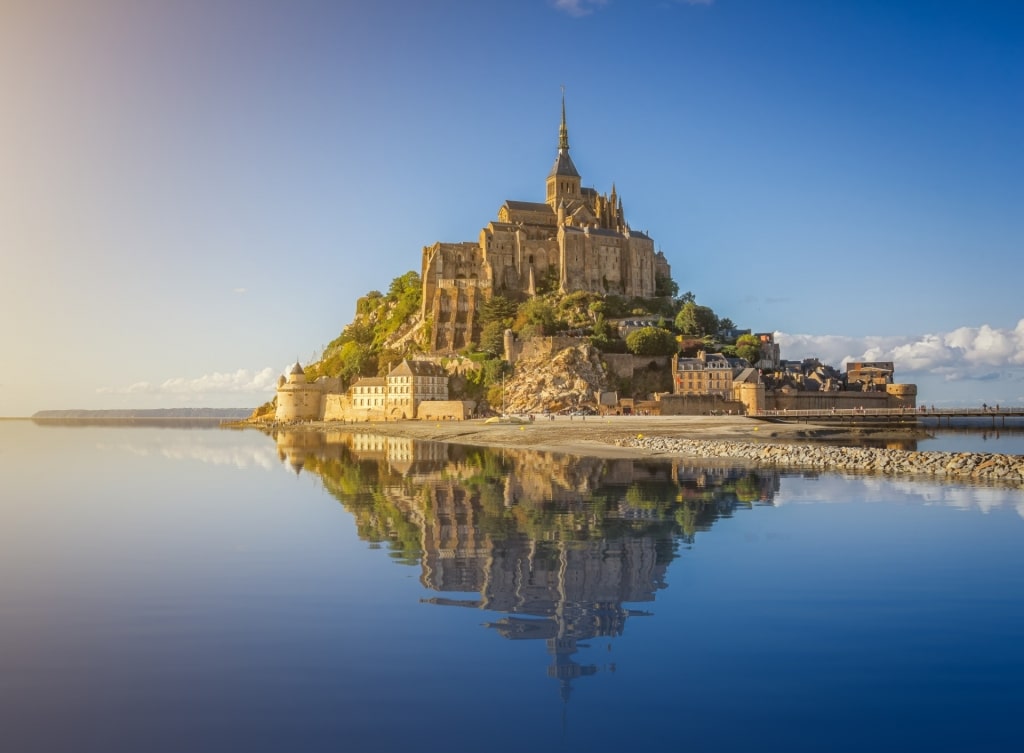
Mont Saint Michel Abbey, near Le Havre
Depicted in the Bayeux Tapestry of 1066 fame, the fortified abbey of Mont-St-Michel was already over a century old by then. This rocky tidal island was a natural strongpoint, as well as a place of pilgrimage.
Its defenses have repelled many invaders over the centuries but Mont Saint Michel, one of the most famous landmarks in France, now welcomes some three million visitors a year. They are served by shops, restaurants, and hotels both on the island and on the mainland nearby.
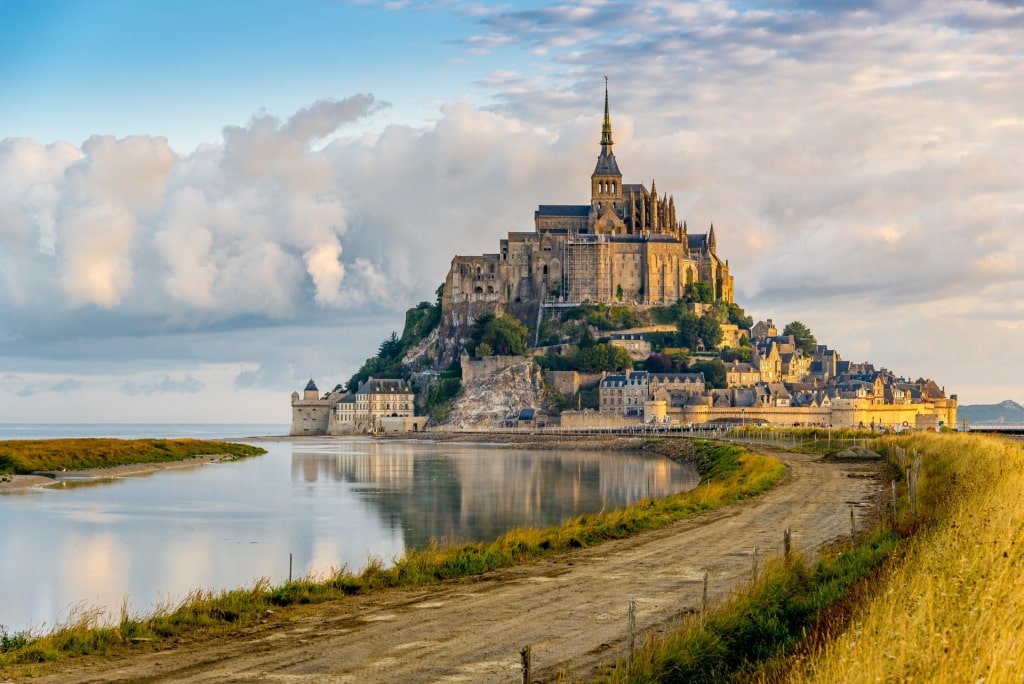
Mont Saint Michel Abbey, near Le Havre
The beauty of the much-photographed “Merveille” (Marvel) can be best appreciated by walking across its causeway. A free shuttle can also carry you across, but be warned that the climb up cobbled streets to the top is not an easy one.
The historic Benedictine Abbey remains the main attraction. It’s a splendid example of medieval religious—and military—architecture.
After touring the European landmark, take a moment to enjoy the views from the top. Halfway up, or down, the Tour du Nord is also worth the short detour for its panoramas.
Amphitheater of Nîmes, near Marseille

Amphitheater of Nîmes, near Marseille
The world’s best-preserved Roman amphitheater is still used for concerts and sport. It is also the venue twice a year for bullfights, a reminder of its historic use for staged fights between wild animals and gladiators.
At its height, during the first and early second century, the 34 terraces could hold up to 24,000 seated spectators. Later turned into a fortress, by the 18th century the amphitheater was crammed with more than 100 houses which were all demolished by 1812.

Amphitheater of Nîmes, near Marseille
It was this adaptation to different uses that allowed the arena to remain so well preserved. Now restored to much of its former grandeur, digital guides—and an annual Roman Festival—help bring its past vividly to life.
The modern arena is currently undergoing a 25-year restoration due to end in 2033, although it’s still in full use. It can host 16,300 spectators with a movable roof to shelter against rain or cold weather.
Le Suquet, Cannes
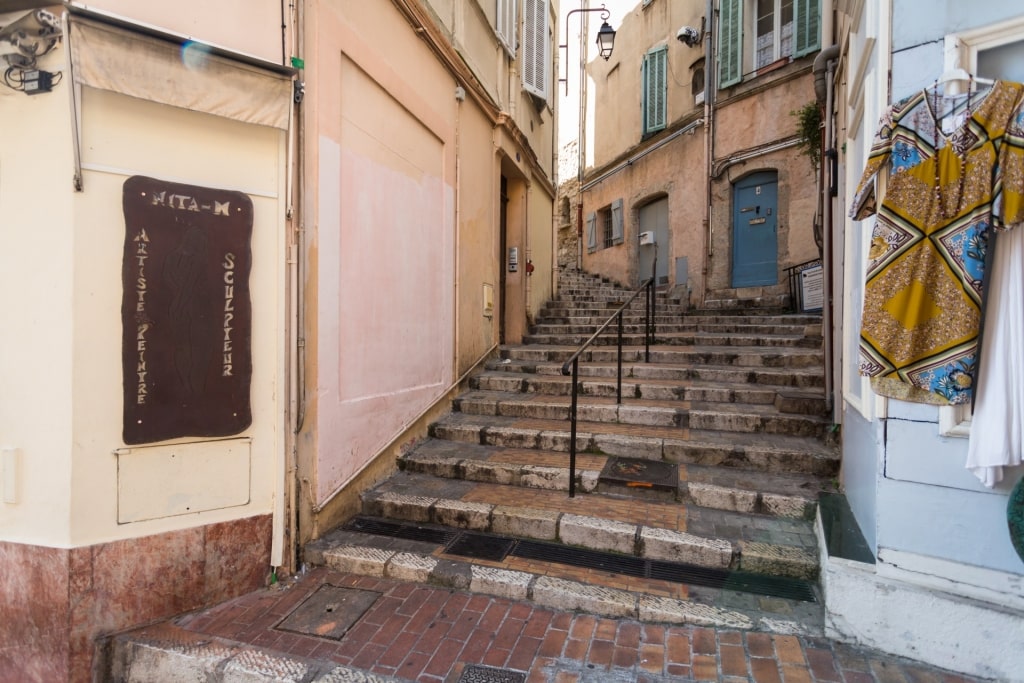
Le Suquet, Cannes
One of the best things to do in Cannes is to climb the steep steps of Le Suquet. Wander its cobbled alleyways, and you can imagine a time when the city was still a picturesque fishing village. That charm was what first attracted visitors to this spot on the Mediterranean coastline.
Originally the site of a Roman fort, Le Suquet hill was later taken over by monks. Their castle is now the Le Musée des Explorations du Monde, home to an eclectic collection of art and artifacts.
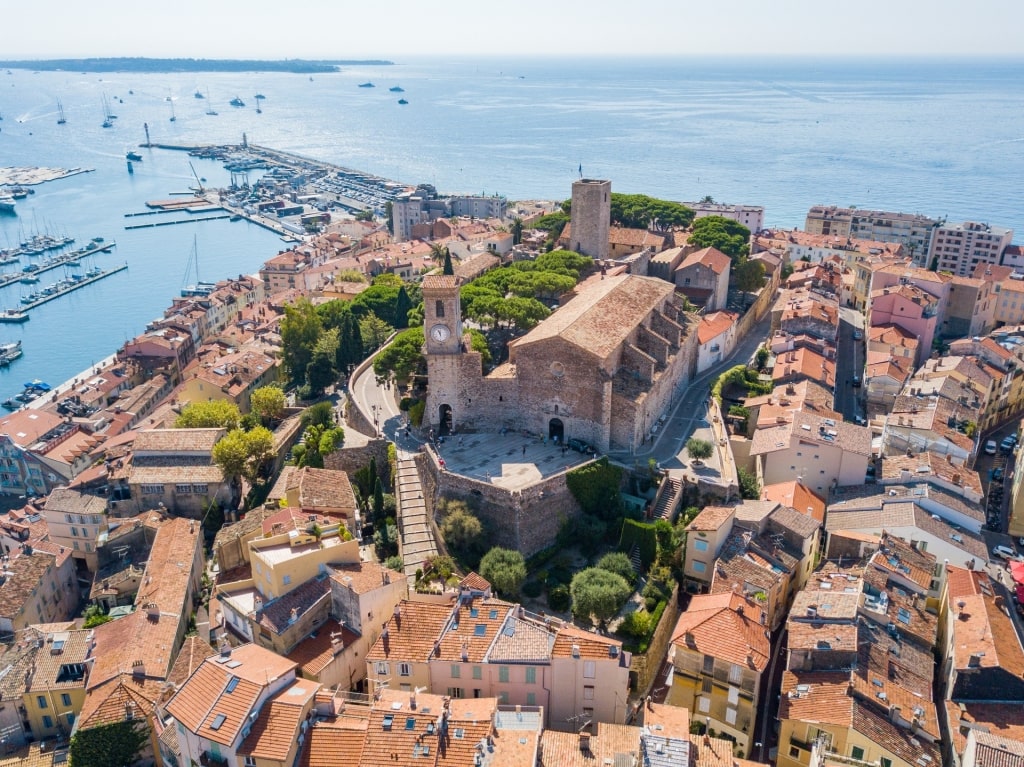
Eglise Notre-Dame de l’Esperance, Cannes
Beside it is Eglise Notre-Dame de l’Esperance, a gothic-style church dating to 1627. The plaza outside is a popular spot to take in the 360-degree view over Cannes and the sea.
The cobbled main street was the original high road into Cannes, guarded by the French castle. Now it’s lined with restaurants, cafés, and shops.

Marché Forville, Cannes
At its foot is Marché Forville, a superb covered market for food or wine shopping, along with other popular souvenirs from France. It’s open every day except Monday, when it becomes a flea market.
Read: Best Places to Shop in France
Basilique Notre-Dame de la Garde, Marseille
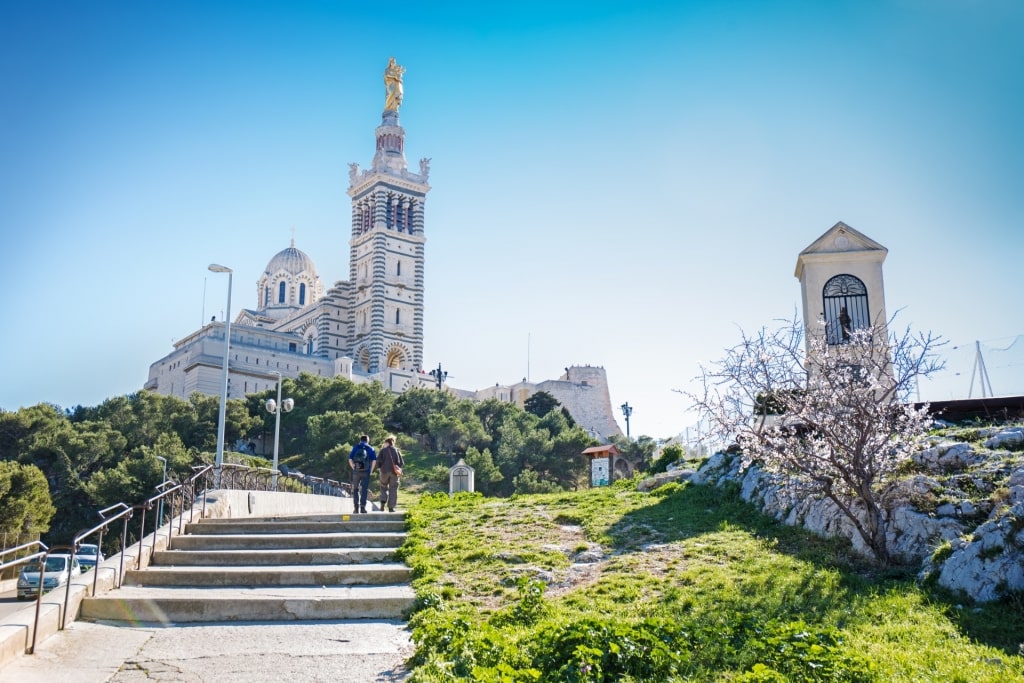
Basilique Notre-Dame de la Garde, Marseille
Visiting this neo-Byzantine church, with its beautiful mosaics, statues, and other wonders, is one of the best things to do in Marseille. The bell tower, itself 40 feet high, supports a gilded, 37ft-tall statue of the Virgin Mary.
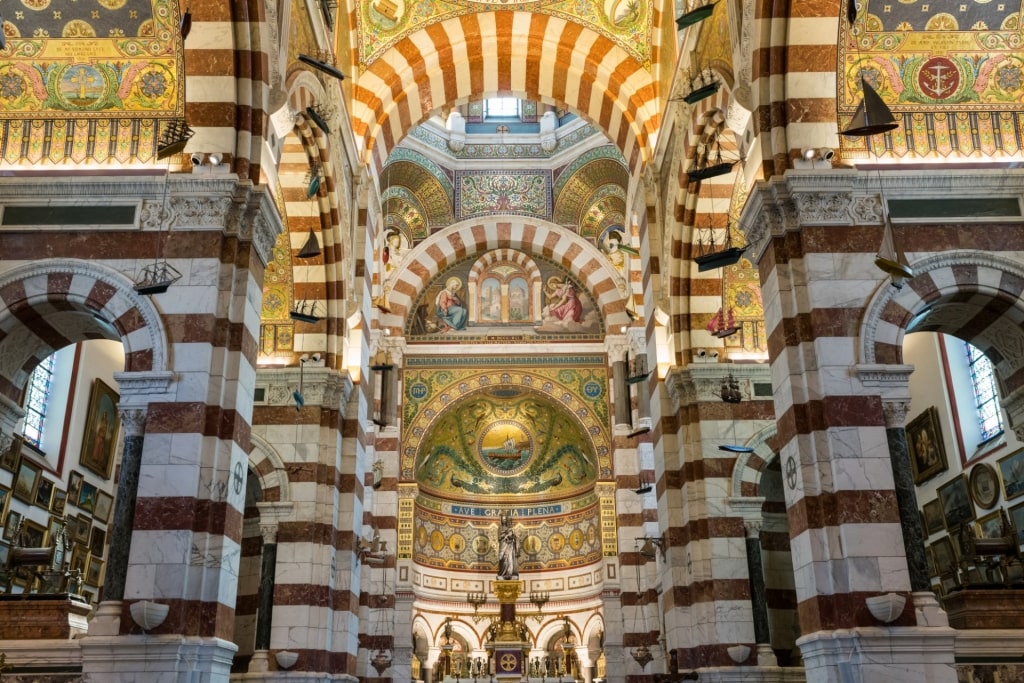
Basilique Notre-Dame de la Garde, Marseille
The mantle of spiritual protection cast over the city gives Notre-Dame its nickname of “La Bonne Mère” (“Good Mother”). A major restoration from 2001 to 2008 repaired the damage of centuries, including World War II.
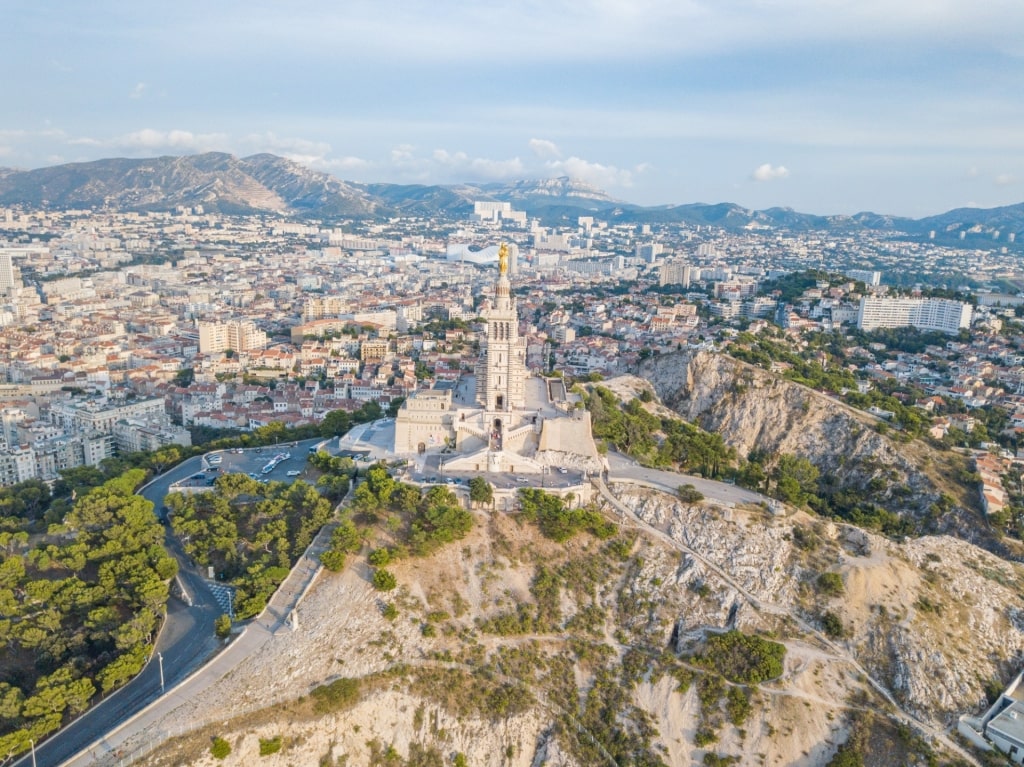
Basilique Notre-Dame de la Garde, Marseille
The basilica takes its name from the 500-foot-high “Garde” (Guard) hill, the highest point in Marseille. With views over the entire city, and far out to sea, it was long a lookout point and site of a fort.
That 16th-century fort—remains of which can still be seen—was replaced in 1853, when the first stone was laid for the present basilica. The 360-degree view remains, and many visitors make the climb just for that.
Louvre Museum, Paris
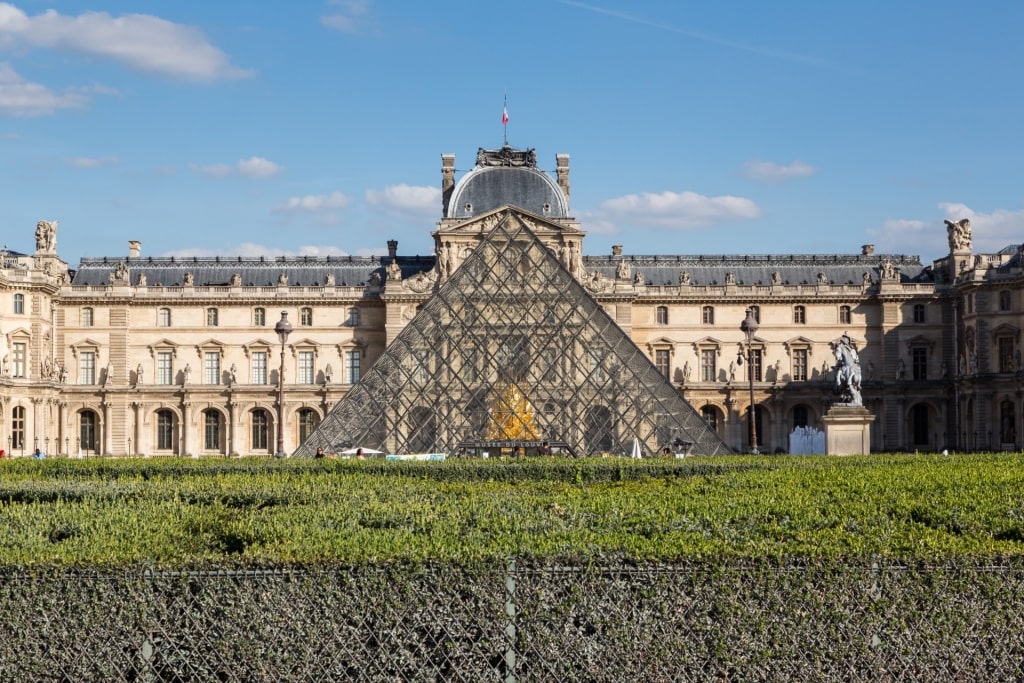
Louvre Museum, Paris
One of the best museums in Europe, the Louvre was originally a medieval fortress beside the Seine. Later the royal palace, it was left as the home of the national art collection when Louis XIV moved to the Palace of Versailles.
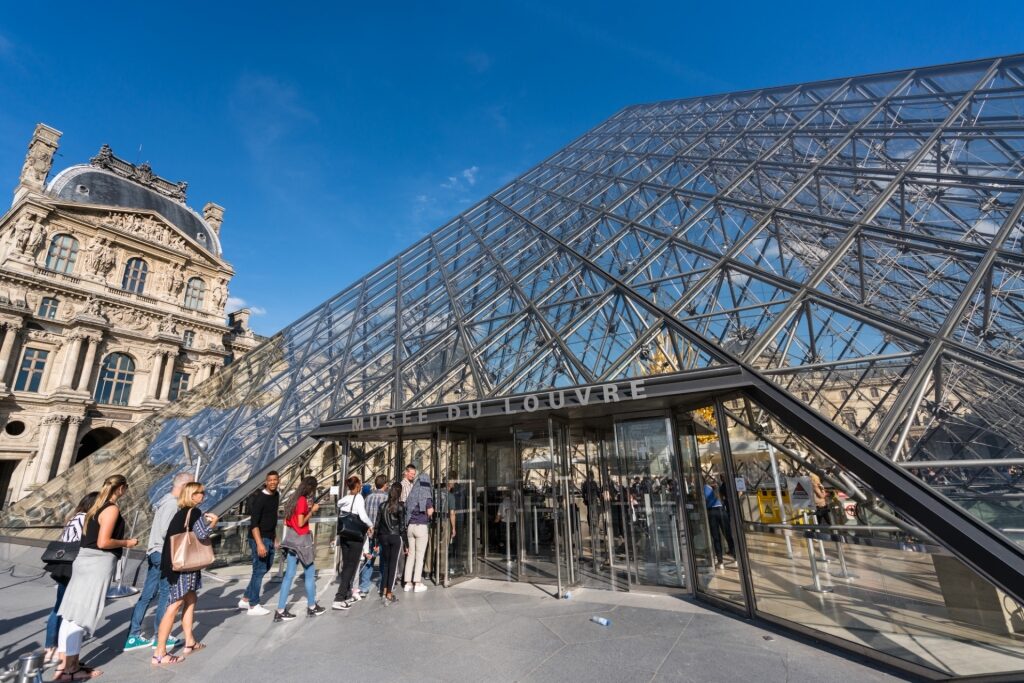
Louvre Museum, Paris
A distinctive glass pyramid was added in 1993 as the main entrance and is one of the most distinctive landmarks in France. Its most famous artwork is the Mona Lisa but there are many other treasures that can be admired without the inevitable crowds.
Leonardo’s Virgin & Child with St. Anne is an arguably better work from the master himself, for example. Look out for Vermeer’s The Astronomer, a rare male study from the Dutch master.
The Venus de Milo is another well-known work, but The Scribe, a haunting Egyptian sculpture from 2,500 BCE is equally impressive. Sleeping Hermaphroditus, a Roman sculpture excavated in 1608, is so finely detailed you can study it for hours.
As for the palace itself, there is much to be seen in its decor. Look out for the Napoleon III apartments on the first floor, and the moat, dungeons—and a model—of that medieval fortress in the basement of the Sully Wing.
Read: Discover the Pleasures of Summer in France
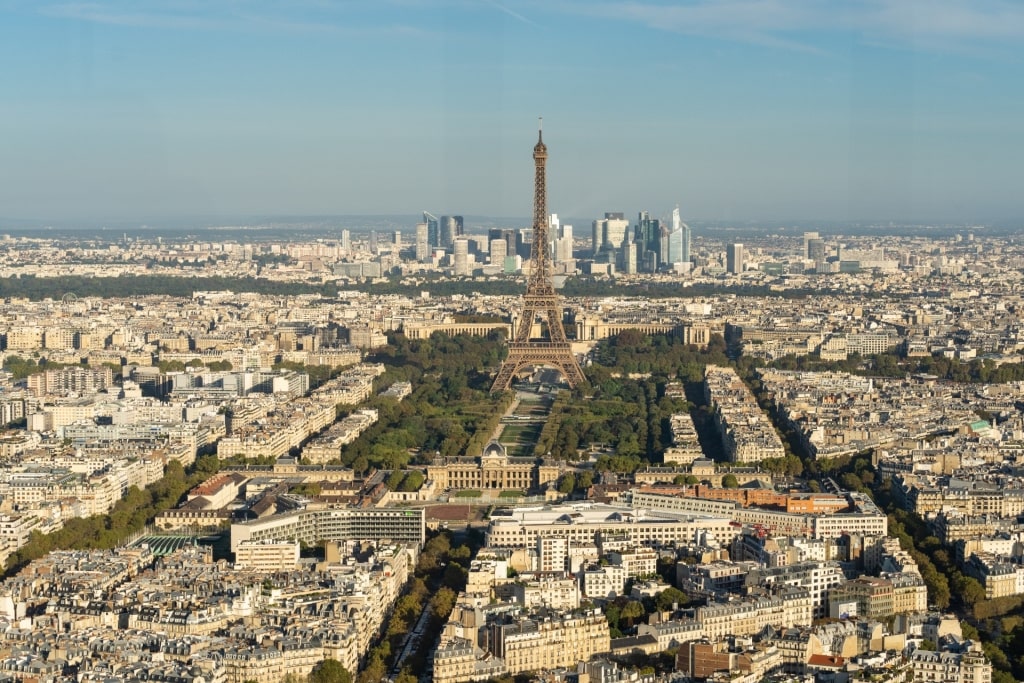
Paris
Are you inspired by these historical sights to visit France? Browse our cruises to France and see these and many other French wonders for yourself.
